Residents of Barrow, Alaska on verge of becoming ‘climate refugees’
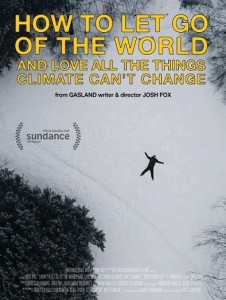 One of the more impactful films screened by Eric Raddatz and Melissa DeHaven at the Sixth Annual Fort Myers Film Festival this past April was Josh Fox’s documentary How to Let Go of the World and Love All the Things Climate Can’t Change. In the documentary, Fox visits 12 countries on six continents to assess the impact of climate change and survey how the planet’s growing number of climate refugees are coping with environmental grief.
One of the more impactful films screened by Eric Raddatz and Melissa DeHaven at the Sixth Annual Fort Myers Film Festival this past April was Josh Fox’s documentary How to Let Go of the World and Love All the Things Climate Can’t Change. In the documentary, Fox visits 12 countries on six continents to assess the impact of climate change and survey how the planet’s growing number of climate refugees are coping with environmental grief.
Since the Fort Myers Film Festival’s closing on April 10, the world has been witnessing the inexorable loss of land and habitat to sea level rise, just as Fox predicted in the documentary. In late April, the world learned that five tiny islands in the Soloman 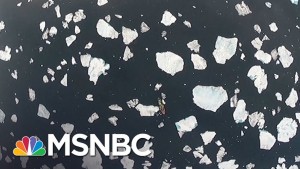 Archipelago have disappeared amid rising seas and erosion. Then last month, UNESCO warned that projected sea level rise threatens more than a dozen World Heritage sites including Venice, Italy, the Sydney Opera House, the Galapagos Islands, Stonehenge, Easter Island and the Statue of Liberty. But as the debate in this year’s election
Archipelago have disappeared amid rising seas and erosion. Then last month, UNESCO warned that projected sea level rise threatens more than a dozen World Heritage sites including Venice, Italy, the Sydney Opera House, the Galapagos Islands, Stonehenge, Easter Island and the Statue of Liberty. But as the debate in this year’s election  cycle underscores, many Americans believe that the hype about climate change is either fabricated, hyperbolic or just too futuristic to worry about.
cycle underscores, many Americans believe that the hype about climate change is either fabricated, hyperbolic or just too futuristic to worry about.
MSNBC’s Chris Hayes is not one of them. This week, he has been visiting various communities around the country that are already struggling with 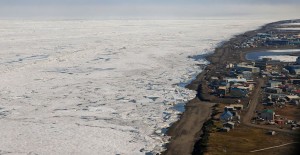 the consequences of global warming and sea level rise. Last Monday, his show, All In with Chris Hayes, visited Isle de Jean Charles, a tiny island off the south coast of Louisiana that is being swallowed by the Gulf of Mexico, and on Wednesday All In went north to Barrow, Alaska,
the consequences of global warming and sea level rise. Last Monday, his show, All In with Chris Hayes, visited Isle de Jean Charles, a tiny island off the south coast of Louisiana that is being swallowed by the Gulf of Mexico, and on Wednesday All In went north to Barrow, Alaska, 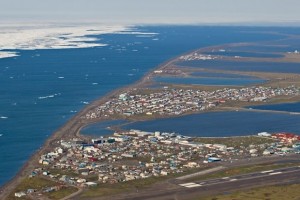 where the thinning and loss of artic ice is wreaking havoc on the indigenous people who have made their living whaling for time out of memory.
where the thinning and loss of artic ice is wreaking havoc on the indigenous people who have made their living whaling for time out of memory.
Lest you think Barrow’s problems too remote to warrant your concern, scientists warn that there’s new evidence coming in that links the rapid warming taking place in the Arctic to extreme 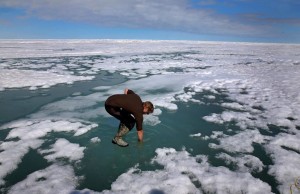 weather events in highly populated latitudes far south such as the recent flash floods in West Virginia, record highs in the southwest and wildfires in California.
weather events in highly populated latitudes far south such as the recent flash floods in West Virginia, record highs in the southwest and wildfires in California.
“The Arctic as a whole has gotten warmer and wetter since the start of the 21st century, a change attributed to sea-ice reduction,” Yereth Rosen 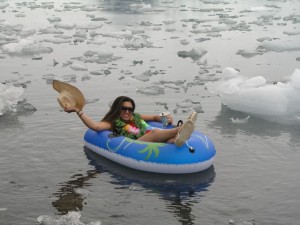 wrote last August in the Alaska Dispatch News. “Other forces like reduced snow cover — which this year hit a near-record June low in the Northern Hemisphere – and cloud formation amplify the warming.”
wrote last August in the Alaska Dispatch News. “Other forces like reduced snow cover — which this year hit a near-record June low in the Northern Hemisphere – and cloud formation amplify the warming.”
While All In focused on the thinning and loss of sea ice in Barrow, scientists with the National Oceanic & Atmospheric Administration (NOAA) 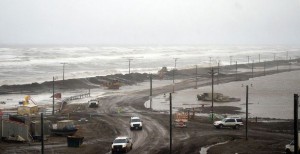 and United States Geological Survey (USGS) are also concerned with the loss of Alaska’s glaciers. While the Greenland ice sheet and Antarctica dwarf Alaska’s glaciers, the latter are disproportionately contributing to sea level rise, scientists say. For example, Shad O’Neel of the
and United States Geological Survey (USGS) are also concerned with the loss of Alaska’s glaciers. While the Greenland ice sheet and Antarctica dwarf Alaska’s glaciers, the latter are disproportionately contributing to sea level rise, scientists say. For example, Shad O’Neel of the 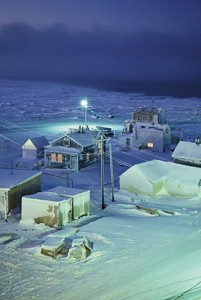 USGS points out that while mountain glaciers hold only 1 percent of the world’s glacial ice, they are contributing 30 percent of the water that is currently increasing sea levels worldwide. In all, Alaska’s glaciers are losing 75 billion tons of ice a year, and almost all of that comes from the glaciers on land rather than those spilling into tidewater. And glacial melt affects more than sea levels. The increasing amount of fresh water pouring off them changes marine salinity and currents and, ultimately, circulation in the Arctic Ocean, O’Neel said.
USGS points out that while mountain glaciers hold only 1 percent of the world’s glacial ice, they are contributing 30 percent of the water that is currently increasing sea levels worldwide. In all, Alaska’s glaciers are losing 75 billion tons of ice a year, and almost all of that comes from the glaciers on land rather than those spilling into tidewater. And glacial melt affects more than sea levels. The increasing amount of fresh water pouring off them changes marine salinity and currents and, ultimately, circulation in the Arctic Ocean, O’Neel said.
All this portends rough sledding in the lower 48 states, but in Barrow, the sea is already moving inland to the consternation of the town’s mayor, Robert C. Harcharek. Mayor Harcharek told All In that if 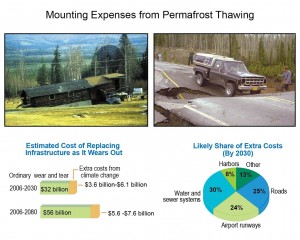 he could, he would move the entire town about a mile inland from its current location in order to compensate for losses the town has experienced as a result of rising tides and sea levels. But that’s not likely to occur any time soon given that Barrow has invested more than $1 Billion in infrastructure – in the form of roads, public buildings, schools and the like – which cannot be easily replaced. But if temperatures and sea level continue to rise at the
he could, he would move the entire town about a mile inland from its current location in order to compensate for losses the town has experienced as a result of rising tides and sea levels. But that’s not likely to occur any time soon given that Barrow has invested more than $1 Billion in infrastructure – in the form of roads, public buildings, schools and the like – which cannot be easily replaced. But if temperatures and sea level continue to rise at the 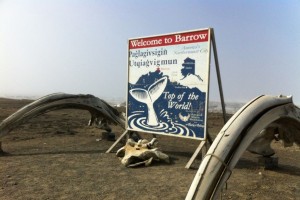 pace they have over just the past ten years, the residents of Barrow may join those of Isle de Jean Charles in Louisiana in the country’s first wave of climate refugees.
pace they have over just the past ten years, the residents of Barrow may join those of Isle de Jean Charles in Louisiana in the country’s first wave of climate refugees.
If you weren’t lucky enough to see How to Let Go of the World and Love All the Things Climate Can’t Change during the Fort Myers Film Festival, you can see it all summer long on HBO.
Posted July 1, 2016.
Related Articles.













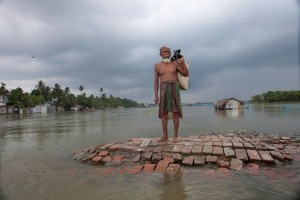

 Tom Hall is both an amateur artist and aspiring novelist who writes art quest thrillers. He is in the final stages of completing his debut novel titled "Art Detective," a story that fictionalizes the discovery of the fabled billion-dollar Impressionist collection of Parisian art dealer Josse Bernheim-Jeune, thought by many to have perished during World War II when the collection's hiding place, Castle de Rastignac in southern France, was destroyed by the Wehrmacht in reprisal for attacks made by members of the Resistance operating in the area. A former tax attorney, Tom holds a bachelor's degree as well as both a juris doctorate and masters of laws in taxation from the University of Florida. Tom lives in Estero, Florida with his fiancee, Connie, and their four cats.
Tom Hall is both an amateur artist and aspiring novelist who writes art quest thrillers. He is in the final stages of completing his debut novel titled "Art Detective," a story that fictionalizes the discovery of the fabled billion-dollar Impressionist collection of Parisian art dealer Josse Bernheim-Jeune, thought by many to have perished during World War II when the collection's hiding place, Castle de Rastignac in southern France, was destroyed by the Wehrmacht in reprisal for attacks made by members of the Resistance operating in the area. A former tax attorney, Tom holds a bachelor's degree as well as both a juris doctorate and masters of laws in taxation from the University of Florida. Tom lives in Estero, Florida with his fiancee, Connie, and their four cats.